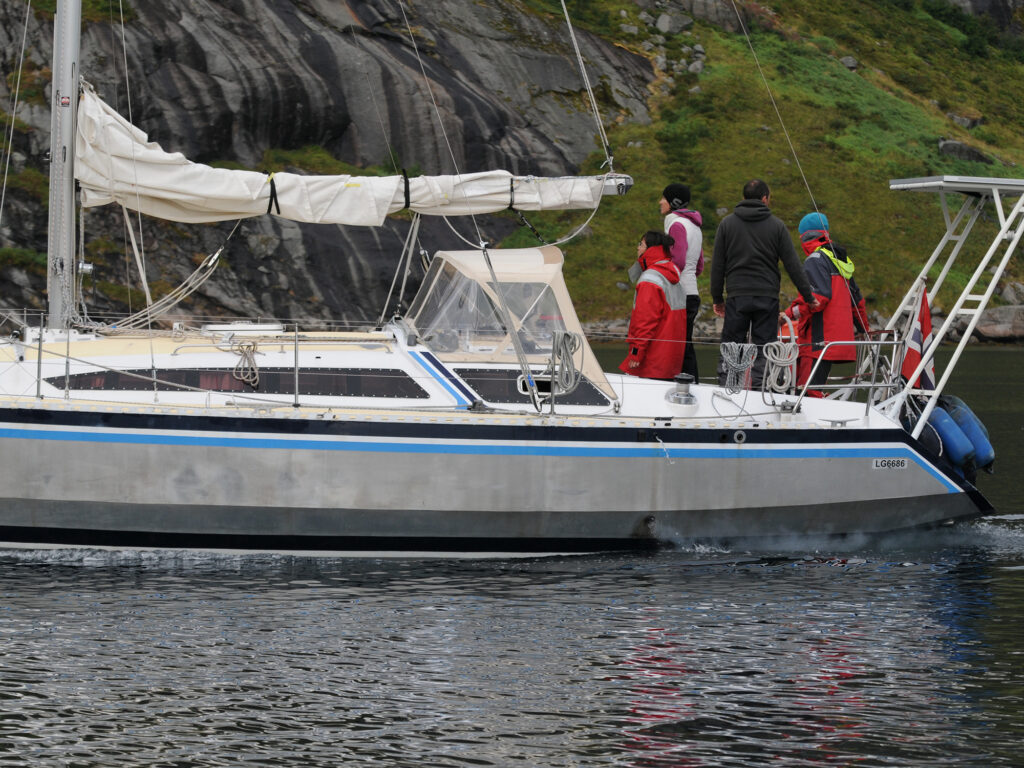
Canvas was once the common thread that sailors used for shade. Today, it has evolved into superfabrics such as Sunbrella and WeatherMax. There’s now an artful blend of ergonomics, careful stitching, and recognition that when it comes to the crew soaking up sunshine, less is better.
Designs vary, and coming up with the right-size dodger, Bimini top, awning or full cockpit cover takes careful consideration. Racing sailors embrace small, collapsible spray hoods that shield little more than the companionway. A more expansive covering could hinder sailhandling and add windage that might carve 0.042 of a knot off boatspeed. At the other end of the spectrum, cocoon advocates maximize their canvas footprint.
Most cruisers find the right compromise to be a medium-size dodger and Bimini top combo. The latter can easily be folded, minimizing windage in heavy-weather situations.
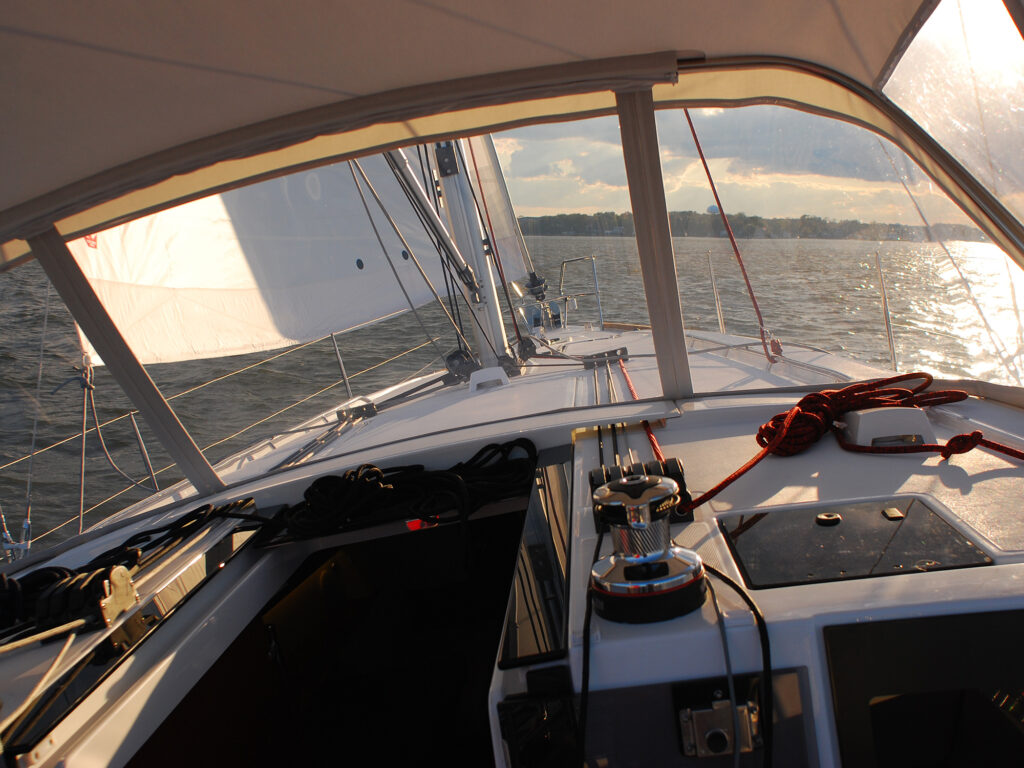
Dodgers and smaller spray hoods also improve ventilation, a feature that’s as welcome in the galley as it is in a quarter berth. In colder climes, the person on watch can tuck up under the dodger and still maintain 360-degree visibility. This type of spray hood won’t interfere with sail setting, reefing, steering or other vital aspects of boathandling. The addition of zippered windows guarantees ventilation in light air.
Another useful attribute associated with a well-made dodger can be the series of handholds leading in and out of the cockpit. Fabric covers can be snapped over the windows when the boat is at rest, protecting the clear plastic and greatly extending its life span.
A dodger works in harmony with a sailboat’s deck layout. In many cases, a canvas pro will modify the standard design to cope with halyards that have been led aft, and with winches and rope clutches linked to the line handling. While a one-shape-fits-all approach can hamper winch-handle rotation or make rope clutch clusters harder to operate, a good canvas loft will take these issues into consideration and design the dodger accordingly.
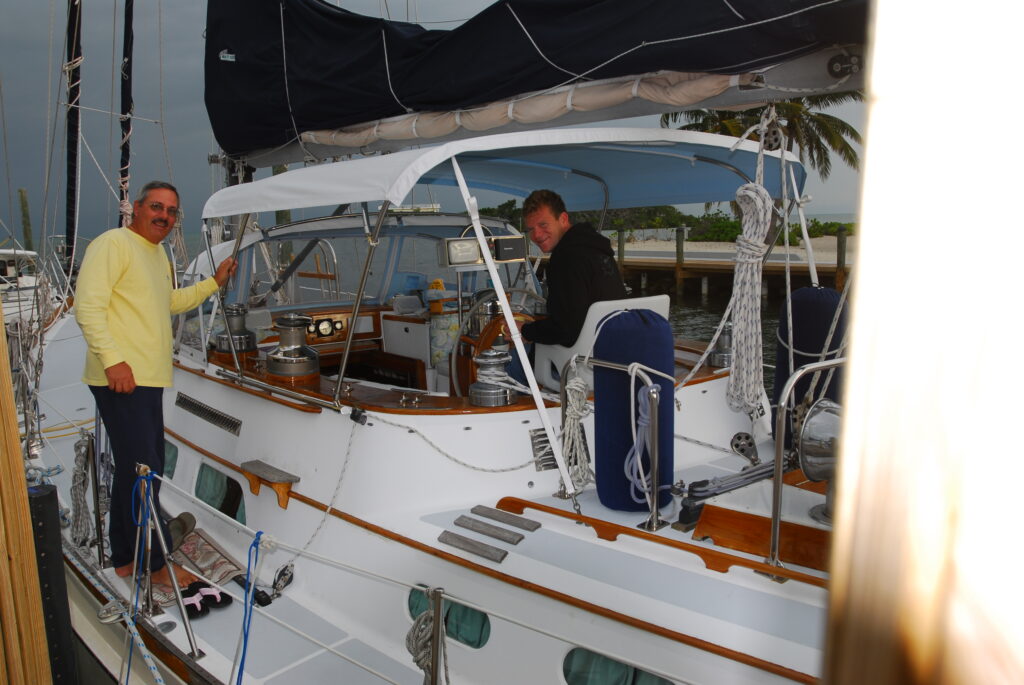
Bimini tops, named after a particularly sunny spot in the Bahamas, can add shade while welcoming the breeze. These tops can be quickly raised or lowered via a set of wicketlike bows hinged at the base.
However, sailing under such a large cover has a few challenges. The first is mainsail handling—setting, dousing, reefing and trimming. Bimini tops with built-in, overhead “sail trim” windows often fail to provide enough of a wide-angle view to keep tabs on leech telltales and those near the luff. Things get even more complicated with a summer thunderstorm or an offshore cold front, when the need to reef sails in a hurry is the priority, and an oversize Bimini top spells trouble.
The best solution, especially for those making offshore passages, is a smaller Bimini top—one that works in concert with a dodger and can be easily secured before a heavy-weather encounter.
A full cockpit enclosure might appear to offer greater protection from wind and sea, and a well-supported structure can withstand substantial wind gusts, but when the onslaught includes breaking waves, the “Florida room” is likely to lose its appeal. However, it remains a legit option for inshore cruising during the shoulder seasons or while wending down the Intracoastal Waterway. Remember that in a gale or storm at sea, the extra windage and large surface area become a significant hazard.
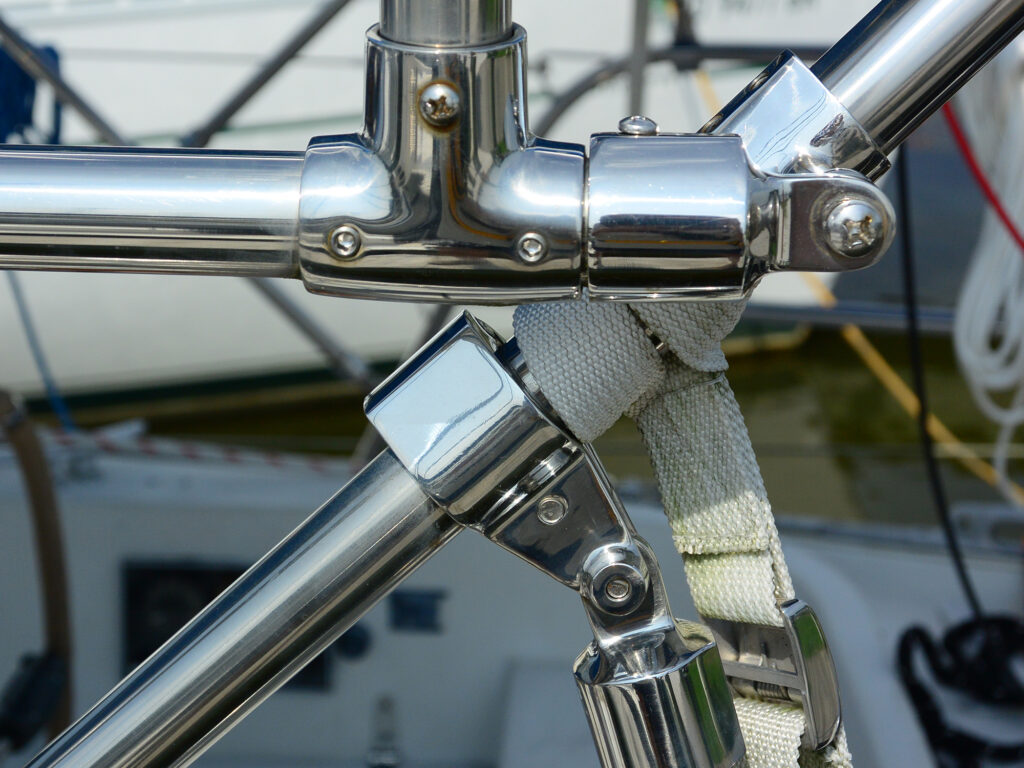
Another key consideration involves the stainless-steel tubular arch geometry. It adds shape and structural support to the canvas cover, and determines where the crew enters and exits the cockpit. The best dodgers and Bimini tops take advantage of pathways where nonskid surfaces prevail, and where handholds are abundant. A major problem with many full cockpit covers is their extreme rail-to-rail design and how outboard the entry and exit points become.
Hardware used to secure the canvas and the bows must be carefully attached to the deck. In many cases, the sailboat’s designer never envisioned anything being attached in such locations, and the core material, sandwiched between the top and bottom FRP skins, was not meant to be penetrated. It’s important to seal the core with epoxy and carefully bed hardware with marine sealant. Major support stanchions should be through-bolted, and might require topping and backing plates.
If you’re in the market for canvas-work, note that most lofts develop skills building covers that are appropriate for their local waters. Sailors who intend to cross oceans should look for rugged, heavily reinforced, lower-profile dodgers with mounting hardware that’s ready to shrug off breaking Gulf Stream seas.
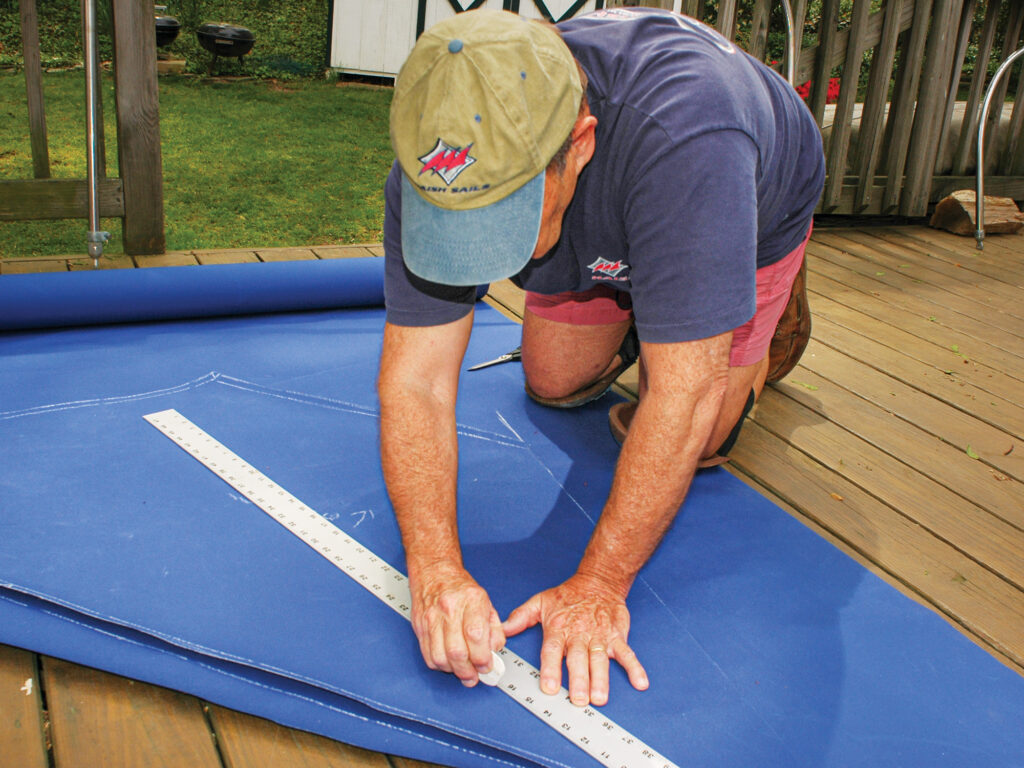
Do It Yourself
Many cruising sailors enjoy spending time guiding canvas under a sewing machine needle as they stitch their way to a new awning, dodger or Bimini top. Those with a machine might find lee cloths or a mainsail cover to be the best starting point, but for sailors ready for more of a challenge, a DIY dodger or Bimini-top project awaits.
There’s lots of guidance, kits, tools and sewing machines available from Sailrite. Check local sailing and seamanship schools for how-to courses in marine canvas-work.
Measure carefully, create paper patterns, and then set up the stainless-steel tubing framework that defines the cover’s shape. Do a fit check of the top and side panels. Add assembly info with tailor’s chalk. Terms such as top, bottom, forward, aft, port and starboard, along with marks where panels attach, will prevent assembly snafus. They’ll also ensure that hardware and fasteners will be mounted in the right locations.
Tubular stainless-steel bows define the shape and size of the dodger or awning, and the most noticeable characteristic is defined by the radius of these bows. Hard bends deliver more room under the dodger, while a smooth radius creates a spray hood with less windage, a lower profile, and less room for crew seeking shelter.
One value of a kit dodger is that the dimensions are set, and the curve of the bows matches the cut of the fabric. Sailrite provides meticulous directions, and its online videos make DIY projects user-friendly. You can reuse existing stainless-steel bows and make a new, identical cover. The old fabric will act as a pattern and be instructive for assembly.
I’ve grown quite fond of sewing Sunbrella and WeatherMax fabrics. Sunbrella is a bit easier to work with, while WeatherMax is a top performer when it comes to strength, durability and longevity. Double-sided tape, spring clamps and a staple gun help to hold panels in place while sewing.








